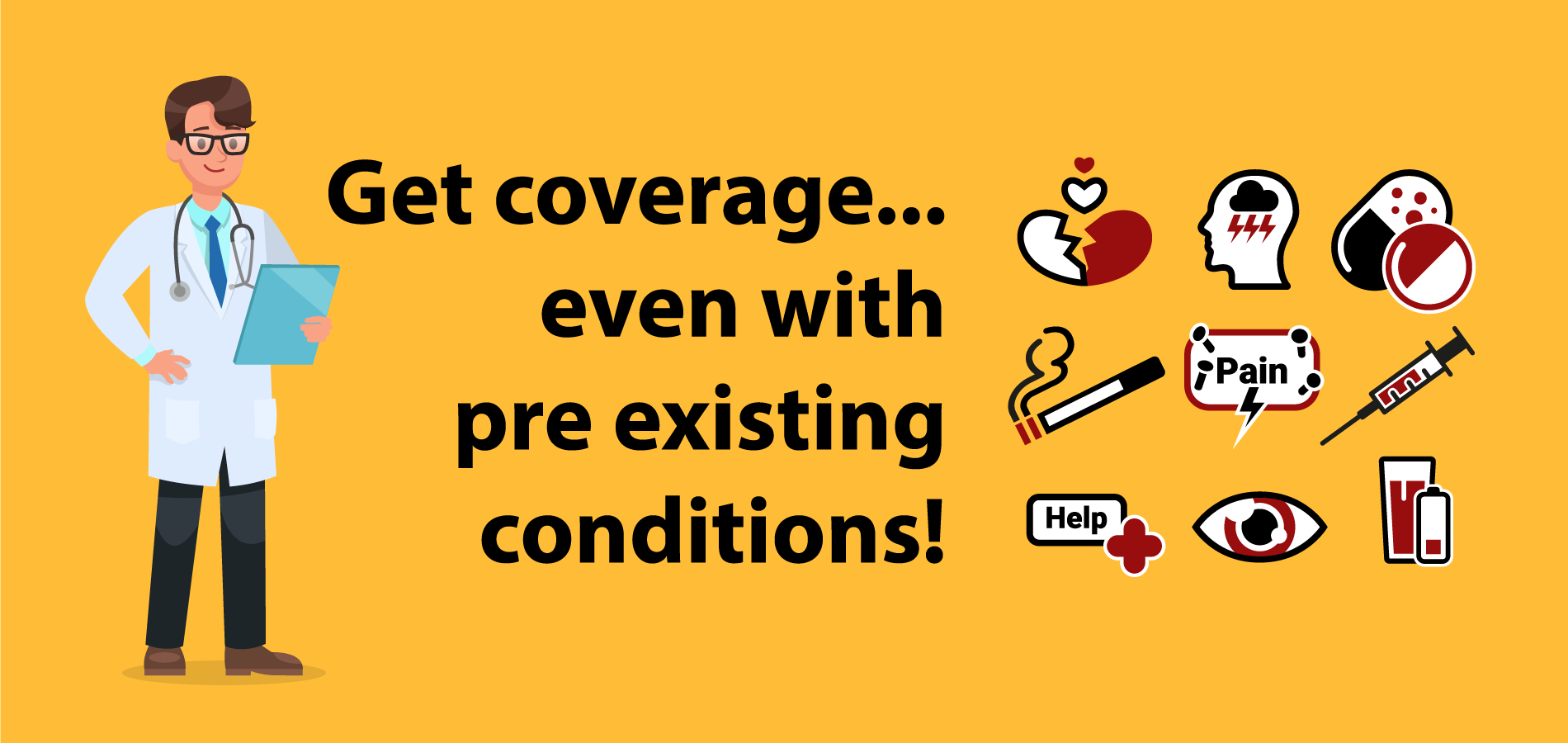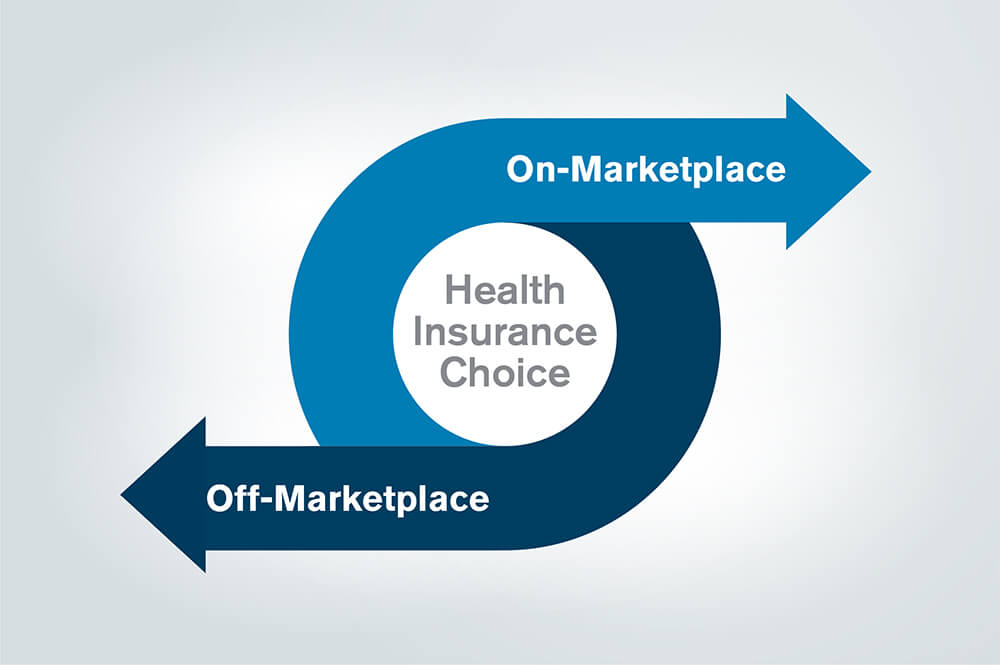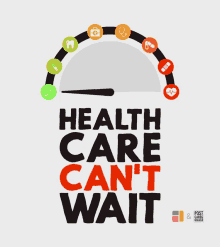How Do I Know If I Need Personal Health Insurance?
Health insurance is one of the most critical aspects of managing your personal and financial health. Whether you’re a young adult just entering the workforce or a retiree looking for coverage, understanding when and why you need personal health insurance is vital. But with so many options available, it can be challenging to know whether you need a policy or if you’re covered under another plan.
In this article, we’ll explore the various factors that will help you determine if you need personal health insurance, how to assess your coverage needs, and how to select the right plan for you.
Key Takeaways
- Health Insurance Is Essential for Financial Protection: It helps mitigate medical costs, ensuring you don’t face a financial burden due to health emergencies.
- Assess Your Health, Age, and Employment Status: These factors will determine the kind of coverage you need.
- Consider Your Family and Dependents: If you have dependents, health insurance ensures their coverage too.
- Affordability Matters: Explore available subsidies or low-cost plans if you’re worried about premiums.
- Protect Yourself and Your Future: Health insurance provides peace of mind by covering unforeseen medical expenses and ensuring access to healthcare services.
Understanding Personal Health Insurance
Personal health insurance is an individual health coverage plan that provides financial assistance for medical expenses in exchange for a monthly premium. This insurance can cover a wide range of healthcare services, including doctor visits, hospital stays, surgeries, and prescription drugs. Health insurance can also protect you from high medical costs, ensuring that if an unexpected medical emergency arises, you won’t face a financial crisis.
Health insurance plans can vary in terms of coverage, cost, and eligibility, so it’s essential to assess your needs before deciding to buy a policy. To determine whether you need personal health insurance, it’s necessary to consider factors like your health status, employment situation, income, and family situation.
Factors to Consider When Deciding If You Need Personal Health Insurance
Personal health insurance plays an essential role in securing both your health and financial well-being. However, determining whether you need personal health insurance involves assessing several important factors. These factors include your age, health status, income, employment situation, and lifestyle choices. By evaluating each of these elements, you can make a well-informed decision on whether purchasing personal health insurance is necessary for you.
Age and Health Status
Your age and overall health are key determinants in assessing the need for personal health insurance. While younger individuals, particularly those in their 20s and 30s, may assume they don’t need health insurance due to fewer medical needs, the unexpected can happen at any age. Accidents, illnesses, and emergency health issues are unpredictable, and having health insurance can be a financial lifesaver.
Example:
A 30-year-old individual may rarely need to visit a doctor due to being in good health. However, in the event of an unexpected injury, illness, or medical emergency, the cost of treatment could be financially overwhelming without insurance. For someone with pre-existing medical conditions or for individuals over 50, the need for consistent health coverage increases due to the higher likelihood of requiring medical attention.
In short, even if you’re healthy, medical emergencies, chronic illnesses, or unexpected accidents can lead to high medical costs, and health insurance provides financial protection against these situations.
Your Employment Status
Employment status is a crucial factor when considering health insurance needs. Many employers offer group health insurance plans as part of their benefits package. These plans are often more affordable due to employer contributions and can cover you at a reduced cost compared to individual health insurance policies. If you have employer-sponsored health insurance, this may be a more cost-effective option than purchasing an individual plan.
Example:
If you are employed full-time with an employer who offers health insurance, it’s often more economical to participate in the company’s health insurance plan, as the employer pays a significant portion of the premium. However, if you’re self-employed, between jobs, or a freelancer, you may need to consider purchasing an individual health insurance plan to protect your health and financial stability.
If you’re unemployed or self-employed, there are options such as the Health Insurance Marketplace where you can shop for individual plans, potentially qualifying for subsidies if you meet specific income guidelines.
Income Level and Affordability
Affordability is often one of the most significant concerns for individuals when considering health insurance. Many people assume that health insurance is expensive and out of their reach, but there are various options to make it affordable. For individuals with low to moderate incomes, government programs like Medicaid may provide low-cost or free healthcare coverage. Additionally, through the Affordable Care Act (ACA), individuals can find subsidized plans that lower monthly premiums and out-of-pocket expenses.
Example:
Under the ACA, individuals earning within a specific income range can receive premium subsidies to reduce their monthly costs. These plans offer essential coverage, including preventive services, prescriptions, and emergency care, without breaking the bank. If you have a higher income, you might still find a plan that suits your needs and budget by carefully comparing available options in the marketplace.
It’s essential to assess your income and how much you can realistically afford to pay for insurance premiums. Health insurance might be more affordable than you think, and the cost of not having it could be much higher in the event of an emergency.
Dependents and Family Coverage
If you have a spouse, children, or other dependents, the decision to purchase personal health insurance becomes even more pressing. Family health insurance plans often provide significant value, as they bundle coverage for multiple individuals under a single policy. This is especially important if your dependents require regular medical attention, including doctor visits, vaccinations, or specialist care.
Example:
If you have a young child, they will require regular pediatric checkups, vaccinations, and emergency care. Without health insurance, the cost of these services could accumulate quickly. Family health insurance plans allow you to provide coverage for your spouse and children at a more affordable rate than purchasing separate plans for each member. The peace of mind that comes with ensuring your family’s health is protected is invaluable.
Existing Coverage and Alternatives

Before purchasing personal health insurance, it’s important to check whether you are already covered through other means. For individuals under the age of 26, many can stay on their parent’s health insurance plan. If you’re married, you may be eligible for coverage through your spouse’s employer-sponsored insurance plan. Additionally, government programs such as Medicaid or Medicare provide coverage for those who meet specific eligibility requirements.
Example:
If you are under 26, you can stay on your parent’s health insurance policy. If you qualify for Medicaid or Medicare due to your income or age, these government-sponsored programs can provide comprehensive coverage at little to no cost. Before purchasing an individual policy, make sure to investigate whether you’re eligible for coverage under one of these alternatives.
It’s essential to evaluate your current coverage options, as having duplicate insurance may lead to unnecessary costs. If you already have coverage, it may be unnecessary to purchase an additional policy.
Access to Healthcare
Access to quality healthcare is an essential consideration when deciding whether you need personal health insurance. If you live in an area with limited healthcare providers, particularly in rural or underserved regions, having health insurance ensures that you can access the care you need without incurring significant out-of-pocket expenses. Health insurance helps alleviate the financial burden of necessary treatments, procedures, and doctor visits.
Example:
In rural areas, where healthcare providers may be few and far between, medical services can be more expensive. Health insurance can cover the cost of seeking treatment in distant hospitals or paying for out-of-network care if necessary. Whether you need routine care or emergency services, health insurance can guarantee you receive the care you need without financial strain.
Lifestyle Factors and Risk Exposure
Lifestyle factors also play a role in determining your need for health insurance. Individuals who engage in high-risk activities, such as extreme sports or hazardous occupations, should consider purchasing health insurance to protect themselves against the possibility of injuries or accidents. The cost of medical treatment after an accident or emergency can be overwhelming without insurance coverage.
Example:
If you’re an avid rock climber or scuba diver, the risk of injury is higher than for someone who engages in less risky activities. Having personal health insurance ensures that you have the financial coverage to manage potential medical bills that may result from these activities. Similarly, individuals in dangerous jobs, such as construction work, may also face an increased risk of injury, making health insurance an essential protective measure.
Common Health Insurance Options
| Health Insurance Option | Description | Key Features | Ideal For |
|---|---|---|---|
| Employer-Sponsored Health Insurance | Coverage provided by your employer as part of your benefits package. | – Affordable premiums due to employer contribution – Comprehensive coverage – Group coverage for family | Employees who have employer-sponsored benefits. |
| Marketplace Health Insurance | Health insurance plans available through the Health Insurance Marketplace (Affordable Care Act). | – Subsidies for low to moderate-income individuals – Variety of plans (bronze, silver, gold, platinum) – Coverage for essential health benefits | Individuals without employer-sponsored insurance or self-employed people. |
| Medicaid | Government-funded health insurance for low-income individuals and families. | – Low or no cost – Comprehensive coverage – Eligibility based on income and other criteria | Low-income individuals and families. |
| Medicare | Government program for individuals aged 65+ or those with disabilities. | – Coverage for hospital care, medical services, and prescription drugs – Low premiums, co-pays, and deductibles | Seniors aged 65+ and people with disabilities. |
| Short-Term Health Insurance | Temporary health insurance for those between jobs or waiting for another insurance plan. | – Lower premiums – Temporary coverage – Limited benefits and exclusions | Individuals between jobs or in transition. |
| Catastrophic Health Insurance | Health insurance with a high deductible that covers serious medical events. | – Low premiums – High deductible – Covers major medical events only (emergency care, hospitalization) | Young, healthy individuals who want low-cost coverage for major medical events. |
When it comes to personal health insurance, there are several types of plans available, each with its own advantages and limitations. Depending on your unique situation, such as your employment status, income level, and healthcare needs, you may find that one option works better for you than another. Below is a detailed breakdown of the most common health insurance options available to individuals:
Employer-Sponsored Health Insurance
Employer-sponsored health insurance is one of the most common ways that individuals receive coverage. If you are employed full-time, your employer may offer health insurance as part of your benefits package. These plans are often the most affordable option because your employer typically contributes a portion of the premium costs, and premiums are usually deducted directly from your paycheck.
Key Features:
- Affordable premiums: Because employers often share the cost of the premiums, employee contributions tend to be lower compared to individual health insurance plans.
- Comprehensive coverage: Employer-sponsored plans typically cover a wide range of services, including preventive care, doctor visits, hospitalization, prescription drugs, and sometimes dental and vision coverage.
- Convenience: Premiums are often automatically deducted from your paycheck, making it easy to manage.
- Group coverage: These plans cover the employee and often allow employees to add their spouse, children, or other dependents to the plan.
Example:
A person working for a large company may pay a small portion of their insurance premium, with the employer covering a significant portion of the cost. The plan would provide comprehensive coverage for health services such as doctor visits, emergency care, and prescription medications.
However, the availability of employer-sponsored health insurance can vary by employer and may not be available for part-time employees or contractors. If your employer does not offer insurance, you’ll need to explore other options.
Marketplace Health Insurance

The Health Insurance Marketplace, also known as the Exchange, was established under the Affordable Care Act (ACA) to offer health insurance to individuals who do not have access to employer-sponsored insurance. The marketplace allows you to compare different plans, and depending on your income, you may qualify for subsidies to help reduce your monthly premiums and out-of-pocket costs.
Key Features:
- Subsidies: Income-based subsidies are available for those who meet the income requirements, making health insurance more affordable.
- Comprehensive coverage: Marketplace plans must cover essential health benefits, including emergency services, maternity care, mental health services, prescription drugs, and preventive services.
- Variety of plans: You can choose from a range of plans with varying levels of coverage (bronze, silver, gold, and platinum), allowing you to select the plan that fits your budget and healthcare needs.
- Open enrollment period: Health insurance plans through the marketplace are typically available during open enrollment periods, although special enrollment periods may be available if you experience certain life changes (e.g., marriage, having a baby, or job loss).
Example:
A self-employed person who does not have access to employer-sponsored insurance might go to the Health Insurance Marketplace to shop for coverage. They could potentially qualify for a subsidy based on their income, which would lower their monthly premiums and reduce their out-of-pocket costs.
However, one downside is that if you don’t qualify for subsidies, the premiums can be relatively high compared to other options, and you may still be subject to deductibles, co-pays, and out-of-pocket expenses.
Medicaid and Medicare
Medicaid and Medicare are two government-funded health insurance programs designed to provide coverage for specific populations. These programs are intended to help individuals who are either elderly, disabled, or low-income.
- Medicaid: This program is designed for low-income individuals and families, including children, pregnant women, elderly individuals, and people with disabilities. Medicaid provides comprehensive coverage at little or no cost to those who qualify.
- Medicare: Medicare is primarily for individuals aged 65 and older, though it also covers people under 65 with certain disabilities. Medicare consists of different parts (A, B, C, and D) that cover hospital care, medical services, and prescription drugs.
Key Features:
- Low or no cost: Medicaid provides free or very low-cost health insurance for individuals who meet certain income and other eligibility criteria. Medicare provides coverage for seniors, often with affordable premiums, co-pays, and deductibles.
- Comprehensive coverage: Both programs offer extensive coverage, including hospital stays, doctor visits, preventive care, and prescription drug coverage.
- Accessibility: Medicaid is available to qualifying low-income individuals and families, while Medicare is available to seniors and certain disabled individuals.
Example:
A senior citizen aged 70 may qualify for Medicare, which would cover hospital visits, doctor visits, and prescription drugs. Alternatively, a low-income family may qualify for Medicaid, which would provide free or very low-cost healthcare coverage, including doctor visits, dental care, and hospital stays.
Short-Term Health Insurance

Short-term health insurance is designed to provide temporary coverage for individuals who are between jobs, waiting for other coverage to start, or in situations where they need limited health insurance. These plans are typically less expensive than traditional health insurance, but they may offer limited benefits and exclusions for pre-existing conditions or certain types of care.
Key Features:
- Temporary coverage: These plans are ideal if you need coverage for a short period, such as between jobs or while waiting for another insurance plan to take effect.
- Lower premiums: Short-term plans are often much cheaper than standard plans, making them an affordable option for individuals in transition.
- Limited coverage: Short-term plans generally provide limited coverage and may not include preventive care, prescription drug coverage, or treatment for pre-existing conditions.
Example:
A person who recently lost their job may opt for a short-term health insurance plan to cover them for the next three months while they search for a new job and wait for the start of their employer-sponsored health plan.
However, it’s important to note that short-term health insurance plans do not offer the same level of comprehensive coverage as traditional health insurance plans. They may leave gaps in your coverage and may not be suitable for individuals with ongoing healthcare needs.
Catastrophic Health Insurance
Catastrophic health insurance is designed to offer protection in case of severe medical emergencies, particularly for young, healthy individuals. These plans come with a high deductible, meaning you’ll need to pay a significant amount out-of-pocket before your insurance kicks in. However, premiums for catastrophic health insurance are generally much lower than traditional health insurance plans, making them appealing to those who want to protect themselves against major medical expenses but don’t need regular healthcare coverage.
Key Features:
- High deductible: Catastrophic health insurance plans have high deductibles and typically only cover serious health events, such as hospitalization or emergency care.
- Low premiums: Premiums for these plans are lower compared to other health insurance options, which is beneficial for individuals who are young and healthy.
- Coverage for major medical events: These plans cover worst-case scenarios, such as accidents or life-threatening illnesses, providing a safety net for major health emergencies.
Example:
A healthy 25-year-old who rarely visits the doctor may choose catastrophic health insurance because it offers low premiums while providing coverage in case of a major accident or illness. The individual would pay a high deductible before the insurance coverage begins, but the low monthly premium makes it a financially viable option for someone who doesn’t need routine medical care.
However, catastrophic health insurance is not ideal for individuals who require regular medical care or those who need coverage for preventive services or prescription medications.
Also Read : What Are The Benefits Of Having Home Insurance?
Conclusion
Determining whether you need personal health insurance depends on various factors like your health, age, employment status, family situation, and financial capability. While many individuals may assume they don’t need insurance, unforeseen medical emergencies can arise at any time. Health insurance offers financial protection and access to necessary medical services, ensuring that you won’t face overwhelming expenses due to accidents, illnesses, or injuries.
By evaluating your specific needs and exploring your options, you can find a health insurance plan that fits your lifestyle and budget. Whether you choose an employer-sponsored plan, a marketplace policy, or government assistance, having personal health insurance is an essential investment in your health and well-being.
FAQs
1. What’s the difference between employer-sponsored and personal health insurance?
- Employer-sponsored insurance is provided through your job and often comes with lower premiums due to group rates and employer contributions.
- Personal health insurance is purchased independently through the Health Insurance Marketplace or private insurers.
2. Do I need health insurance if I’m young and healthy?
Yes. Health insurance protects you from unexpected medical bills due to accidents, emergencies, or sudden illness—regardless of your current health.
3. How can I find the best health insurance plan for me?
Consider your:
- Budget (monthly premiums and out-of-pocket costs)
- Health needs (doctors, medications, frequency of care)
- Network access (preferred providers and hospitals)
Compare plans on the Marketplace or through your employer.
4. What does health insurance typically cover?
Most plans include:
- Doctor visits
- Hospital stays
- Prescription medications
- Preventive care
- Emergency services
Some may also cover mental health, maternity care, and rehabilitation.
5. Can I get health insurance without a job?
Yes. Options include:
- The Health Insurance Marketplace
- Medicaid (if you qualify based on income)
- COBRA (continuation of employer coverage, temporarily)
6. What if I’m over 26 and can’t stay on my parents’ plan?
Once you turn 26, you must find your own coverage. Options include:
- Your employer’s plan
- A Marketplace plan
- Medicaid or Medicare, depending on eligibility
7. How much does personal health insurance cost?
Costs vary widely, depending on:
- Your age
- Location
- Income (you may qualify for subsidies)
- Plan level (Bronze, Silver, Gold, Platinum)
Premiums typically range from $100 to $500+ per month.
